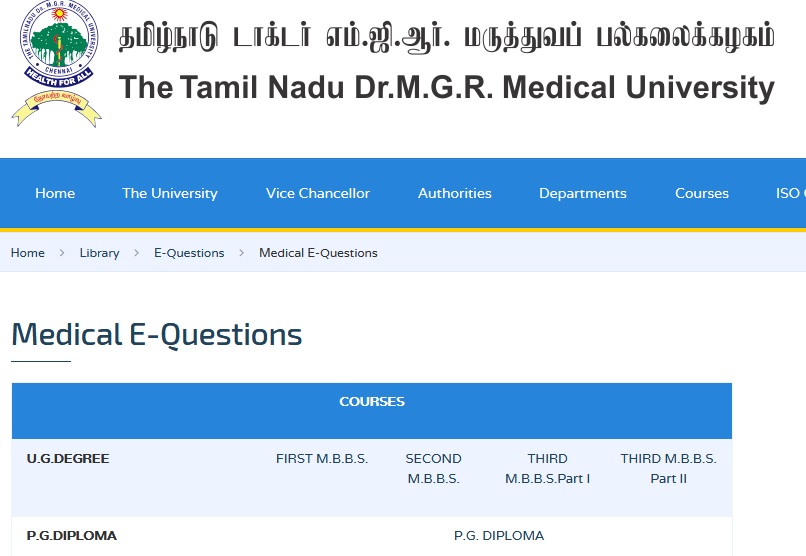Psychophysics MASLP Question Bank : web.tnmgrmu.ac.in
Name of the University : The Tamilnadu Dr. M.G.R. Medical University
Degree : MASTER OF AUDIOLOGY AND SPEECH LANGUAGE PATHOLOGY
Subject Code/Name : 3006/Psychophysics
Year : I
Paper : VI
Document Type : Question Bank
Website : web.tnmgrmu.ac.in
Download Model/Sample Question Paper :
2012-2013 : https://www.pdfquestion.in/uploads/web.tnmgrmu.ac.in/4086-433006KZ.pdf
TNMGRMU Psychophysics Question Paper
Sub. Code: 3006
MASTER OF AUDIOLOGY AND SPEECH LANGUAGE PATHOLOGY
(MASLP) DEGREE EXAMINATION
PAPER VI : PSYCHOPHYSICS
Q.P. Code : 433006
Time : 3 hours
Maximum : 100 marks (180 Min)
Related : Tamilnadu Dr. M.G.R. Medical University Voice & Fluency Disorders MASLP Question Bank : www.pdfquestion.in/4085.html
MARCH 2012
Answer ALL questions in the same order. :
I. Elaborate on :
1. Explain the critical band concept with respect marking.
2. Explain pitch scales affecting pitch.
II. Write notes on :
1. Methods of limits and adjustment.
2. Loudness adaptation.
3. Psychophysical tuning curves.
4. Frequency resolution and excitation patterns.
5. Duration discrimination.
6. Levels of adaptation and its physiology.
7. Role of acoustic reflex in loudness perception.
8. Absolute and relative DILF’s.
9. Lateralization Vs Localization.
10. Explain Binaural fusion and beats phenomenon.

OCTOBER 2011
Sub. Code: 3006
I. Elaborate on :
1. Define and classify marking from psycho acoustic perspective. Discuss the concepts of auditory filters, frequency resolution and marking excitation patterns.
2. Define localization. Discuss factors affecting localization and its clinical applications.
II. Write notes on :
1. ROC curves.
2. Factors affecting loudness.
3. Frequency resolution and excitation pattern.
4. Temporal modulation transfer function.
5. Factors affecting temporal perception.
6. Pathophysiology of fatigue.
7. Pitch of complex tones.
8. Lateralization Vs localization.
9. Binaural summation.
10.Factors affecting behavioral hearing.
OCTOBER 2012
I. Elaborate on :
1. Explain the theory of signal detection. Discuss its applications in detail?
2. Define adaptation. Explain various methods and stimuli for studying adaptation. Discuss the stimulus parameters affecting adaptation.
II. Write notes on :
1. Pathophysiology of fatigue.
2. Weber’s law.
3. Factors affecting loudness.
4. Gap detection temporal integration.
5. Critical band concept.
6. Physiology Tuning curves.
7. Absolute and relative DLP’s.
8. Factors affecting Timbre perception.
9. Marking level difference.
10.Durlach and Jeffress models.
APRIL 2013
I. Elaborate on: (2×20=40)
1. Define and classify marking from psychoacoustic perspective. Discuss the concepts of auditory filters, frequency resolution and marking excitation patterns.
2. Define localization. Discuss factors affecting localization and its clinical applications.
II. Write notes on : (10X6=60)
1. ROC Curves.
2. Factors affecting loudness.
3. Frequency resolution and excitation patterns.
4. Temporal modulation transfer function.
5. Factors affecting temporal perception.
6. Pathophysiology of fatigue.
7. Pitch of complex tones.
8. Lateeralization Vs localization.
9. Binaural summation.
10. Factors affecting binaural healing.
11. Compensation for nasality found in cleft palate speech and measures to be considered for the correction of the same, both surgical and non-surgical therapies.
12. Causes, evaluation methods and therapy techniques used for Hyperkineticdysphonia.
13. Invasive procedures in the measurement of vocal fold vibration.
14. Define inverse filtering and the difference between inverse filtering and source filter interaction.
15. Pre and post operative counseling for Laryngeal Hyper functional disorders of voice and therapy techniques to overcome the same. Justify your choice on that.
16. Critical periods of voice changes.
17. Speech dysfluencies in children with intellectual disabilities.
18. Voice initiation time and voice termination time in stuttering.
19. Differential diagnosis of psychogenic and neuroge nic stuttering.
20. Acoustic measures in the speech of children with stuttering.
APRIL 2014
Answer ALL questions in the same order. :
I. Elaborate on :
1. Is sentence processing parallel or serial? Justify your answer with research evidence.
2. Explain in detail the various models of visual word recognition.
II. Write notes on :
1. Acoustic cues for the perception of nasals.
2. Logogen model of spoken word recognition and its limitations.
3. Prosodic bootstrapping hypothesis.
4. Processing of anaphora.
5. Acoustic cues for the POA of stop consonants.
6. Explain any one interactive model of spoken word recognition.
7. Infants do not require prior experience to discriminate speech sounds. Justify with research evidence.
8. Cues for the perception of diphthongs.
9. Do we make use of semantic information to resolve syntactic ambiguities? Justify your answer with research evidence.
10. What is the role of memory in speech processing? Justify with research evidence.